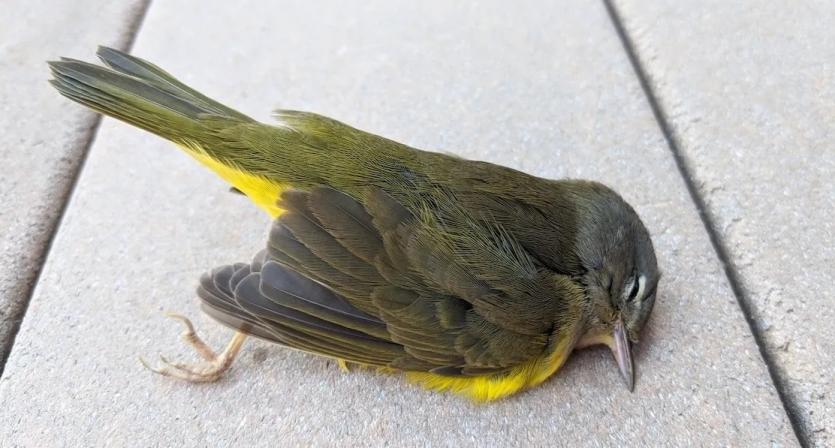A MacGillivray's Warbler found dead in Fairplay, Colorado on Sept. 1, 2020. Photo:Southwest Avian Mortality Project
Starvation Causes Deaths of Potentially Hundreds of Thousands of Birds
The World Daily | Katie Heinrich DECEMBER 30th 2020
It’s no secret that 2020 has been a year for the books in terms of natural disasters. In one year alone, we’ve faced record-setting hurricanes, wildfires, and tornadoes, and even severe cold snaps and winter storms that have occurred earlier in the year than normal. From the wildfires in California, to the hurricanes on the east coast, America has been through the wringer even without civil unrest and COVID-19. Scientists attribute these events primarily to one thing: climate change.
Unfortunately, in what is the great interconnected web of life, when one section of the population is affected by something, a butterfly effect is created up the entire food chain. Climate change, which has caused rising temperatures and dry seasons, has decreased the amount of available seeds and insects in the south-west, requiring birds to travel longer and compete more for the basic necessities for their survival. Insect populations took a huge hit in 2019, and now, in 2020, songbirds have followed - leading everyone to wonder what may be in store for 2021.
Why Are Birds Dying?
In mid-to-late 2020, scientists discovered a disturbing trend in the south-western United States: over 10,000 reported - but with a total estimated in the hundreds of thousands - dead bodies of birds were said to be “falling out of the sky” beginning in September and lasting for several weeks. Birds were found on the ground everywhere, or were seen flying into buildings, for seemingly no reason. After a series of tests and necropsies, the explanation was said to be due to a series of related factors: unseasonably cold winter weather; the climate crisis; and long-term starvation.
Every eleven years, the sun enters into a state known as the “solar minimum.” This simply means that the amount of sunspots and solar flares decreases, even being absent for several days at a time. However, this causes temperatures to drop to the extremes during the winter months on this year. The last solar minimum was in 2009, and 2020 has been a solar minimum year. This has led to extreme early plummets in temperatures, causing the birds’ food supply to die out or forcing them to enter hibernation sooner, as well as forcing birds to migrate south before they were ready and had enough fat stored up for the journey. The freak winter storms may also have confused the birds, causing them to fly into buildings and be too weak to recover.
Second, their starvation was not short-term. It was slow, and lasted for an extended period of time, to the point where their body was even eating into the muscles they needed for flight. This implies that the birds had been without enough food for a while. This, again, was attributed to the climate crisis; the increased high summer temperatures killed off insect and seed populations, leading to less available food. “Long-term starvation” simply means that they were not completely without food for a few days, but instead went without most nutrients and with only enough food to keep them barely alive for a few weeks, until a wrong turn, hard flight, or unexpected snow storm took them out.






